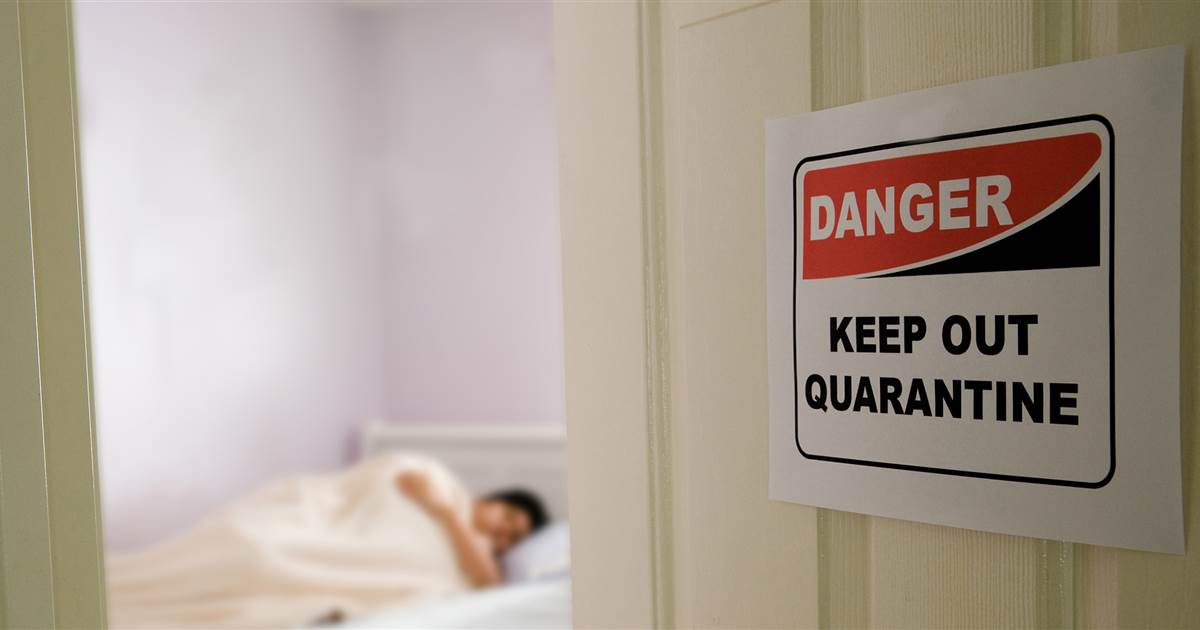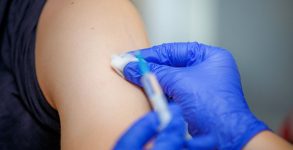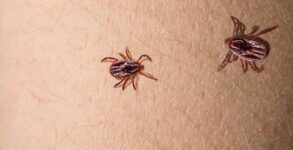A new study has detected that SARS-CoV-2, the virus that causes COVID-19, can infect a person for more than 200 days in an atypical case. The study has been published in the ‘Frontiers in Medicine Journal’.
The atypical case of infection by SARS-CoV-2 was part of a study involving 38 Brazilian patients followed on a weekly basis between April and November 2020 by researchers affiliated with the Pasteur-USP Scientific Platform, a partnership between France’s Pasteur Institute, the University of Sao Paulo (USP) and Oswaldo Cruz Foundation (Fiocruz) in Brazil. The patients were followed until they tested negative twice or three times consecutively by RT-qPCR. The study was supported by FAPESP. It served as an alert regarding the risk of limiting quarantine for COVID-19 patients to seven, ten or even 14 days after they test positive, as initially prescribed by protocols to combat the disease. It also reinforced the significance of vaccination, social distancing, and mask-wearing.
“Of the 38 cases we tracked, two men and a woman were atypical in the sense that the virus was continuously detected in their organism for more than 70 days. Based on this result, we can say that about 8 per cent of people infected by SARS-CoV-2 may be able to transmit the virus for more than two months, without necessarily manifesting any symptoms during the final stage of the infection,” said Marielton dos Passos Cunha, first author of the article. The study was conducted while he was a postdoctoral intern at the Pasteur-USP Scientific Platform.
“We wanted to know if a period of 14 days was really long enough for the virus to stop being detectable. We concluded that it wasn’t. It can take a month for a patient to test negative, and in some cases included in our study the patients remained positive for 71 to 232 days,” said Paola Minoprio, one of the coordinators of the Platform and principal investigator for the study. This is not the first evidence that the virus can remain active for longer than expected even in patients with mild symptoms. In early 2021, researchers at the University of Sao Paulo’s Institute of Tropical Medicine (IMT-USP) in Brazil analyzed 29 samples of nasopharyngeal secretion from patients who tested positive for COVID-19.
The material was collected at a public primary health centre on the tenth day after the onset of symptoms and inoculated into laboratory-grown cells. In 25 per cent of the cases, the viruses present in the samples were capable of infecting the cells and replicating them in vitro. In theory, therefore, other people could be infected if they came into contact with droplets of saliva expelled by 25 per cent of these patients at the time the material was collected. The risk appeared to be even greater for people with compromised immune systems. In a paper published in June 2021, researchers at the same university’s Medical School (FM-USP) described a case of infection that lasted at least 218 days.
The patient was about 40 years old and had undergone aggressive treatment for cancer before contracting COVID-19. An article published in the New England Journal of Medicine in early December 2020 reported the case of an immunocompromised 45-year-old man with an autoimmune blood disorder in whom the virus continued to replicate for 143 days. And an article published in Cell in late December outlined a case study of a female leukaemia patient in whom the virus continued to replicate for at least 70 days, although she had no symptoms of COVID-19.
Even so, this week the Brazilian Ministry of Health reduced the recommended period of self-isolation from ten to seven days for patients with mild or moderate symptoms, and to five days for people without symptoms if they test negative. At end-2021, the US Centers for Disease Control and Prevention (CDC) cut its recommendation from 10 to five days in the case of asymptomatic patients provided they continue to wear a mask and test negative for COVID-19.
In the study led by Minoprio, the difference between women and men in terms of the duration of viral activity was not significant (averaging 22 days and 33 days respectively). As for the three atypical cases, the virus remained detectable for 71 days in the woman and 81 days in one of the two men. None of them had comorbidities and all had mild symptoms of COVID-19. The other atypical man continued to test positive for coronavirus for 232 days (April-November 2020), after which he tested negative three times by RT-qPCR. He had HIV, the virus that causes AIDS, since 2018 but had no detectable viral load thanks to antiretroviral therapy.
“The fact that he’s seropositive for HIV doesn’t mean he’s more susceptible to other infections, as he has undergone the therapy since he was diagnosed. His capacity to respond to an infection by another agent is comparable to that of any other individual, and indeed he did respond to coronavirus when infected. He isn’t immunosuppressed like cancer patients, people with autoimmune diseases or transplantees, for example,” Minoprio said. According to the researchers, his HIV-positive status does not explain the long duration of his coronavirus infection. Many patients infected concurrently by HIV and SARS-CoV-2 would have to be compared with an appropriate control group in order to see if any genetic or immune traits in the host could be associated with such prolonged viral shedding.
The patient underwent weekly tests that detected the persistence of the infection, and samples of the virus were regularly sequenced to show that it was not a case of reinfection and that the virus not only continued to replicate but was also mutating. The strategies used by the virus to escape the immune system during the infection were mapped, showing that viral load fell when there were more neutralizing antibodies and that the virus was able to circumvent the body’s defences to build the load up again. The cycle repeated, forcing the production of more antibodies until the viral load was again reduced.
“It’s important to observe patients like this one because we can learn more about how the virus mutates and which mutations can give rise to variants of concern,” Cunha said. The patient in the study was infected by lineage B.1.1.28, which entered Brazil at the start of 2020. The researchers did not detect mutations in the virus isolated from the patient that could justify classifying it as more transmissible or more resistant to the immune system.
The Pasteur-USP Scientific Platform continues to investigate these and other cases. The 38 patients analyzed in the study led by Minoprio are part of a bank of blood and nasopharyngeal secretion samples collected from 721 people who manifested symptoms associated with this coronavirus. “Fresh data will come from these samples, and we might be able to produce more palpable explanations for these atypical cases,” Cunha said.
“These cases are further evidence that mask-wearing and social distancing are the best ways to control the pandemic. If 14 days after testing positive a person isn’t tested again, they may still be shedding active viruses and be able to infect others, contributing to community transmission,” Minoprio said. “It’s crucial to keep track of infected people so we can find out more about mutations, novel variants, and the transmissibility of SARS-CoV-2,” Minoprio concluded.
Amid COVID surge, 7-day home quarantine mandatory for all international arrivals


















